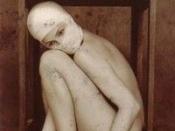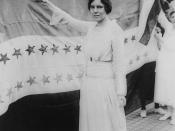How have women (and/or) men internalised the power relations established in the gender order (the male as the one, the female as the other) and cultural ideals of femininity?
The structure of power relations of the gender order is based on assumptions of what is is to be male and female. This arrangement divides humanity in to separate classes according to gender by attributing certain physical and psychological characteristics to each and, on closer observation, we can recognise these simply as a set of binary opposites. Women have traditionally been assigned fanciful qualities that, whilst desirable in any person, are unattainable. In order to assess the impact of the beauty industry on woman's experience in the world, I find it necessary to purge my own previous conceptions of femininity and discern the actuality from societal dogma. In the wake of the women's liberation movement, it is difficult to admit that men are institutionally, socially and personally still superior, frightening but altogether necessary.
In this essay I will primarily focus on the myth of woman: specifically the social construction of females, the significance of fashion and beauty in maintaining women's status as the 'inferior sex' (Beauvoir) , the importance that body image plays in the concept of 'self- hood' and current modes of exploitation.
The concept of 'femininity' is an assumed quality women have felt compelled to embody. 'One is not born, but rather becomes, a woman,' Simone de Beauvoir stated in her 1952 publication 'The Second Sex', 'no biological, psychological or economic fate determines the figure that the human female presents in society; it is civilization as a whole that produces this creature which is described as feminine' (pp 281). With no real basis in women's personal experience, femininity is impossible to personalise or possess because it is an 'artifice,


